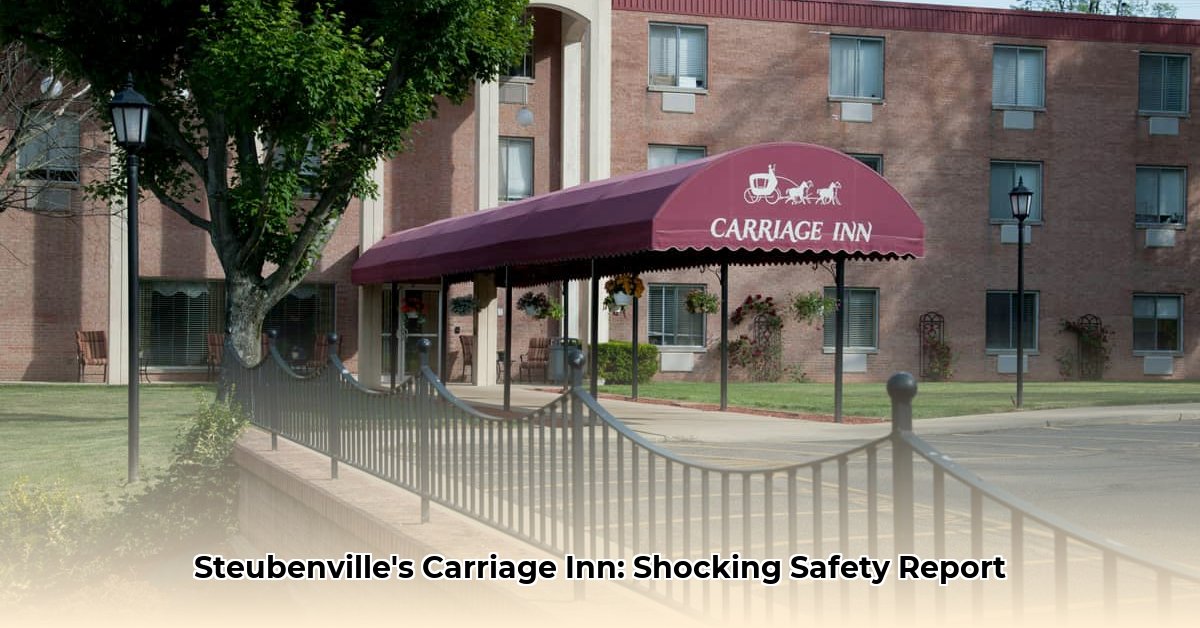
Long-Term Care Performance: A Positive Outlook
Carriage Inn of Steubenville (CIS) demonstrates a strong performance in long-term care, exceeding benchmarks in several key areas. Their 100% influenza vaccination rate significantly surpasses both Ohio's 92.9% and the national average of 94.8%, suggesting effective infection control strategies and proactive resident care. Furthermore, a remarkable 98.4% of residents maintain their self-care routines, considerably higher than the Ohio average of 88.0% and the national average of 85.9%. This indicates a supportive environment that empowers residents to maintain their independence. The facility's acceptance of both Medicare and Medicaid enhances its accessibility to a broader population. Finally, their prompt remediation of all deficiencies noted in the March 2024 inspection by May 2024 demonstrates responsiveness to regulatory concerns. Is this level of proactive care consistently maintained across all aspects of the facility's operations?
Short-Term Rehabilitation: Areas Requiring Improvement
In contrast to its success in long-term care, CIS's short-term rehabilitation services present several areas of concern. Infection rates stand at 10.8%, considerably higher than Ohio's 6.8% and the national average of 7.0%. Similarly, the rate of emergency room visits (20.3%) and serious falls (1.4%) are significantly above the state and national averages of 12.7%/11.9% and 1.0% respectively. These statistics suggest potential shortcomings in infection control, fall prevention protocols, and overall patient safety. Perhaps most concerning is the relatively low rate of residents returning home after rehabilitation (43%), lagging behind the Ohio (51.7%) and national (50.4%) averages. This disparity raises questions about the effectiveness of the rehabilitation programs offered. The March 2024 inspection report highlighted infection control deficiencies, despite subsequent claims of remediation. The lack of specific details regarding the number of residents affected raises further concerns. Additionally, issues with medication management and three fines totaling $29,589 over three years point to ongoing regulatory challenges. Could inconsistent weekend staffing contribute to these issues?
Analysis: Uncovering the Disparity
The stark contrast between CIS's exemplary long-term care and its underperforming short-term rehabilitation suggests potential systemic issues. Resource allocation, staffing levels, and staff training within the rehabilitation unit require thorough investigation. Are there sufficient specialized training programs for rehabilitation staff? Does the facility possess the necessary up-to-date equipment? A comprehensive internal review, coupled with external expert consultation, is necessary to identify the root causes of these discrepancies. The high rate of ER visits among long-term care residents (1.6 per 1000 patient days vs. a 1.4 average) further emphasizes the need for a facility-wide review of patient safety protocols. What specific measures have been implemented to address these issues since the initial inspection?
Actionable Recommendations
To improve patient outcomes and address the identified concerns, the following actions are recommended:
- Residents/Families: Actively monitor care received; promptly report concerns; seek independent assessments of care quality.
- Management: Implement enhanced infection control measures; overhaul medication management protocols; address staffing inconsistencies, particularly on weekends; initiate a robust quality improvement program with measurable goals.
- Regulators (CMS): Conduct thorough inspections focusing on identified shortcomings; strengthen enforcement procedures; ensure that fines reflect the severity of violations.
- Investors: Scrutinize all data on short-term rehabilitation performance; conduct a comprehensive risk assessment; consider diversifying investments.
Conclusion: A Path Towards Improvement
While Carriage Inn of Steubenville demonstrates strengths in long-term care, its short-term rehabilitation services require significant improvement. Addressing the deficiencies concerning infection control, fall prevention, medication management, and overall patient safety is paramount. Open communication, proactive monitoring, and sustained commitment to quality improvement are essential to ensure the well-being and safety of all residents. Further investigation is crucial to identify the underlying causes and implement lasting solutions